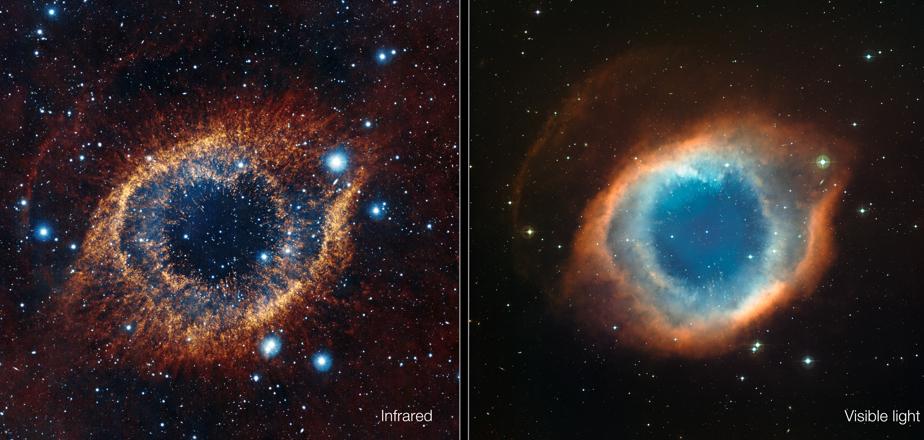Helix Nebula, ‘Eye of God,’ captured in new infrared photos (VIDEO)
This comparison shows a new view of the Helix Nebula acquired with the VISTA telescope in infrared light (left) and the more familiar view in visible light (right).
The Helix Nebula can be seen as never before, in new images that show it glowing like an enormous eye.
The European Southern Observatory used its VISTA telescope in Chile to capture a view of the planetary nebula that is usually invisible to the human eye, Space.com reported. The telescope's sensors are extremely sensitive to infrared light, which allowed it to pick up previously unknown strands of cold, thinly-spread gas (visible here as a dark red haze).
This gas is mostly hidden in pictures taken in visible light, obscured by the bright blue glare of ultraviolet light from the Helix's hot central star. VISTA's images, however, reveal the nebula's delicate structure.
More from GlobalPost: Quarantid meteor shower lights up night sky
The Helix Nebula appears to be surrounded by filaments of molecular hydrogen known as cometary knots. Each one is about as long as our Solar System is wide, according to Wired, and give the nebula a much larger central region than astronomers previously thought it had – at least four light years across.
The Helix's complex cloud of gas, dust and ionised material was formed when a star the size of the Sun collapsed, according to the BBC. The concentric rings we see today are the remains of what were previously the star's outer layers of gas and dust, which have since cooled and radiated outwards.
The Helix Nebula, the closest of its kind to Earth, is around 700 light years from Earth in the constellation Aquarius. Its distinctive pattern gives it its nickname, the Eye of God.
Take a trip there via this animation of VISTA's images:
